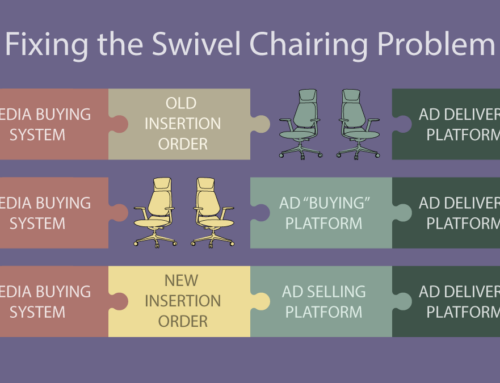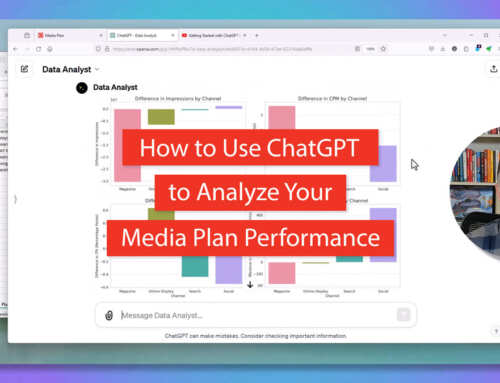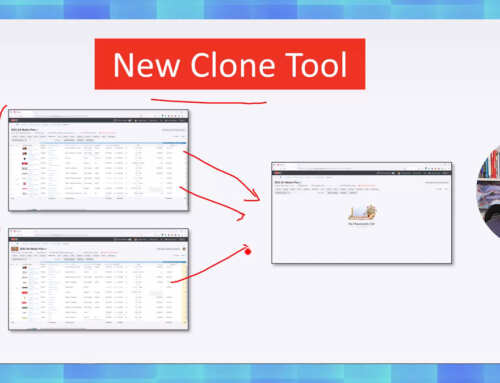Choosing your media buying platform is a critical decision that will make or break your media planning and buying operation. It’s a decision on a tool that you’ll be using for your daily work for years to come. It will give you a distinct competitive advantage if you make the right choice. Or it can bankrupt you if you make the wrong choice.
Using Microsoft Excel for media planning and media buying drains your energy and prevents you from reaching your full potential. Excel’s inefficiency is infamous in professional media circles. But finding a media buying platform to replace Excel can be an extremely confusing and frustrating experience.
It seems that everyone is offering a media buying platform these days. When you Google “media buying platform” (with the quotes to limit the search results), you get more than 20,000 results. This creates a long, confusing list of options. In reality, only a small fraction of those options actually provide a genuine media buying platform.
When choosing a new media buying platform, it’s critical to avoid the Wolf in Sheep’s Clothing, the One Trick Pony, the Frankenstack, and Spoiled Milk. Here’s how to recognize these impostors and how to identify an authentic media buying platform.
Beware of the Wolf in Sheep’s Clothing

Many vendors claiming to provide a media buying platform actually provide a media selling platform. There’s a big difference, but many people, sometimes even the vendors themselves, don’t understand the difference. Here’s a shopping analogy to help distinguish between a buying platform and a selling platform:
I was recently shopping for a Christmas gift for my wife. My goal, of course, was to buy her a gift that she will love. I first walked into the candy store and asked the proprietor to recommend the perfect gift. He recommended chocolate truffles. Then I walked into the jewelry store and asked the proprietor to recommend the perfect gift. He recommended a gold necklace. Finally, I walked into the sporting goods store and asked the proprietor to recommend the perfect gift. She recommended a cross-country skiing kit.
While each of these proprietors was genuinely trying to help me buy the perfect gift for my wife, what they were actually doing was trying to sell me an item from their inventory that best matched my buying criteria. If they were really helping me to buy the perfect gift, they would have recommended a leather handbag – that’s the perfect gift my wife actually wanted. But none recommended the handbag because none had handbags in their inventory. Each of these stores is a marketplace with a selling platform, not a buying platform.
Likewise, many claiming to provide a media buying platform actually provide a media selling platform. Putting up an electronic storefront with a shopping cart on a narrow slice of advertising inventory does not make for a media buying platform. That’s a media selling platform.
A proper media buying platform should give you access to all advertising inventory on the market in all media channels. Otherwise, it’s a “Wolf in Sheep’s Clothing” media selling platform that you can use to execute a single media buy, but not as your media buying platform.
Beware of the One Trick Pony

Many vendors claiming to offer a media buying platform actually only provide the ability to execute a transaction in one media channel using only one buying method – this is a “One Trick Pony.”
Although great at what they do, a first generation Demand Side Platform or “DSP” is not a media buying platform because it only allows you to buy in digital media and only through real-time bidding. Since the vast majority of advertising budgets are spent outside of digital and the RTB buying method, you cannot use a first-generation DSP as your media buying platform.
A proper media buying platform should enable you to buy advertising in all media channels using all buying methods. Otherwise, it’s a “One Trick Pony” that you should consider for executing transactions in a certain channel using a certain method, but not as your media buying platform.
Beware of the Frankenstack

Many vendors claiming to provide a media buying platform actually only provide a “Point Solution” that serves as a component in a “Frankenstack.”
For example, a vendor that enables you to create flowcharts might claim they offer a media buying platform. Another vendor that helps you manage insertion orders might claim they offer a media buying platform. Don’t be fooled. They each only offer you a point solution that automates only a small part of the media buying process. These point solutions will force you to cobble together a Frankenstack of media buying tools wired together with spreadsheets and elbow grease to deliver a complete end-to-end media buying “system.”
A proper media buying platform will give you all the tools you need for a complete end-to-end media planning and media buying process: finding the best advertising programs, sending RFPs, receiving proposals, building your media plan (including packages, flighting, and advanced targeting), analyzing your plan, creating your flowchart, producing your presentation, gaining authorization, sending orders, trafficking, monitoring, reporting, reconciling invoices, and so on. Otherwise, it’s only a component in a “Frankenstack” that you should avoid unless it offers a key piece of functionality that is worth the hassles of creating and maintaining and integration with the rest of your media buying platform.
Beware of Spoiled Milk

A few vendors offer the functionality of a media buying platform, but their technology is “Spoiled Milk” – built on a software foundation well past its expiration date.
The early pioneers in media buying workflow automation deserve admiration for introducing software and computer technology to a process that was previously done by hand. Unfortunately, most of the early pioneers have failed to evolve along with our fast-paced world in the decades since these systems were first introduced.
First, they’ve failed to evolve with advertising as it’s moved increasingly into the digital world. Digital advertising creates many new demands on the media buying operation: many more options and configurations, smaller buys, quicker turnaround time, “always on” planning versus annual upfront planning, big data gathering, in-flight optimization, and more. Systems built for traditional media were not designed to handle the challenges that we face in today’s increasingly digital world.
Second, they’ve failed to evolve with computer technology. Software has moved from closed client/server, minicomputer, or mainframe systems to open, API-driven “cloud” systems. Operating on old technology puts you at a disadvantage because it prohibits you from participating in the modern advertising technology ecosystem. Even with a complete media buying platform, you’ll want to integrate with various sell-side platforms and other technology partners. With an obsolete technology stack, it will be difficult or impossible to make these important connections.
A proper media buying platform is built for modern advertising on a modern technology platform. Otherwise, it’s Spoiled Milk that you should avoid if selecting as your new media buying platform that you’ll be using for years to come.
4 questions to ask when choosing your media buying platform
Avoiding these imposters is not hard if you ask the right questions. In evaluating whether or not a given system is an authentic media buying platform, ask the vendor these four simple questions:
- Does your system give me access to all advertising inventory available on the market in all media channels? If not, this system is a Wolf in Sheep’s Clothing.
- Does your system give me access to all media channels and all buying methods? If not, this system is a One Trick Pony.
- Does your system enable me to perform all the functions of media planning and buying? If not, this system is a Point Solution in a Frankenstack.
- Is your system built for digital advertising on modern computer architecture? If not, this system is Spoiled Milk.
Unless you get a simple “yes” to all four of these questions, the system you are considering is not an authentic media buying platform. And if you’re not using an authentic media buying platform, you’ll continue to operate at a disadvantage in your media planning and buying.
If you’ve read this far, you’re on your way to making the right choice with your new media buying platform. I encourage you to consider the Bionic Media Buying Platform. Besides answering “yes” to all the questions above, you’ll love the beautifully designed user interface and the individualized, expert customer support. Please let us know how we can help you.
Photo credit: Pony Trick by Bundy-Stock





